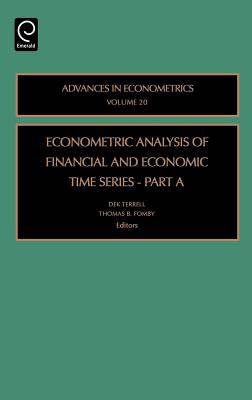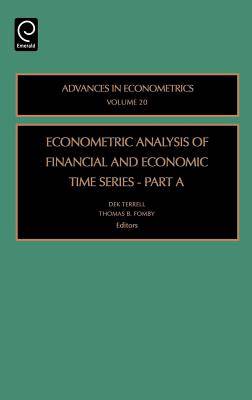
- Afhalen na 1 uur in een winkel met voorraad
- Gratis thuislevering in België vanaf € 30
- Ruim aanbod met 7 miljoen producten
- Afhalen na 1 uur in een winkel met voorraad
- Gratis thuislevering in België vanaf € 30
- Ruim aanbod met 7 miljoen producten
Zoeken
Econometric Analysis of Financial and Economic Time Series
€ 265,95
+ 531 punten
Omschrijving
The editors are pleased to offer the following papers to the reader in recognition and appreciation of the contributions to our literature made by Robert Engle and Sir Clive Granger, winners of the 2003 Nobel Prize in Economics. The basic themes of this part of "Volume 20 of Advances in Econometrics" are time varying betas of the capital asset pricing model, analysis of predictive densities of nonlinear models of stock returns, modelling multivariate dynamic correlations, flexible seasonal time series models, estimation of long-memory time series models, the application of the technique of boosting in volatility forecasting, the use of different time scales in GARCH modelling, out-of-sample evaluation of the Fed Model in stock price valuation, structural change as an alternative to long memory, the use of smooth transition auto-regressions in stochastic volatility modelling, the analysis of the balanced-ness of regressions analyzing Taylor-Type rules of the Fed Funds rate, a mixture-of-experts approach for the estimation of stochastic volatility, a modern assessment of Clives first published paper on Sunspot activity, and a new class of models of tail-dependence in time series subject to jumps. This series aids in the diffusion of new econometric techniques. Emphasis is placed on expositional clarity and ease of assimilation for readers who are unfamiliar with a given topic of a volume. It illustrates new concepts.
Specificaties
Betrokkenen
- Uitgeverij:
Inhoud
- Aantal bladzijden:
- 408
- Taal:
- Engels
- Reeks:
- Reeksnummer:
- nr. 20
Eigenschappen
- Productcode (EAN):
- 9780762312740
- Verschijningsdatum:
- 1/03/2006
- Uitvoering:
- Hardcover
- Formaat:
- Genaaid
- Afmetingen:
- 156 mm x 236 mm
- Gewicht:
- 712 g

Alleen bij Standaard Boekhandel
+ 531 punten op je klantenkaart van Standaard Boekhandel
Beoordelingen
We publiceren alleen reviews die voldoen aan de voorwaarden voor reviews. Bekijk onze voorwaarden voor reviews.







